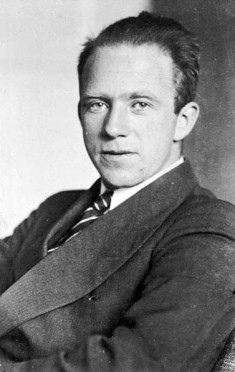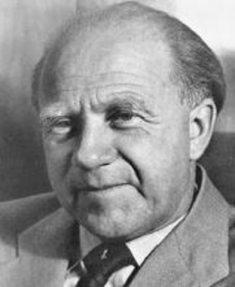| Werner Heisenberg | |
|---|---|
 |
|
| Theoretical physicist | |
| Specialty | Quantum mechanics |
| Born | Dec. 5, 1901 Würzburg, Bavaria, German Empire |
| Died | Feb. 1, 1976 (at age 74) Munich, Bavaria, West Germany |
| Nationality | German |
Werner Heisenberg was a German theoretical physicist and a well-known Nobel Prize recipient. He received this award in Physics for being one of the key creators of quantum mechanics. Besides this, he is also known for his contributions to the theories of the atomic nucleus, turbulent flows, cosmic rays, ferromagnetism and subatomic particles. His noted crucial contributions to physics include the formulation of quantum mechanics by using matrices. This formulation is now also widely used for its development and modern interpretation.
Early Life
Heisenberg was born in 1901 in Wuzburg, Germany. His father was a secondary school teacher who taught classical languages. He later became Germany’s only ordinarius professor who specialized in modern and Medieval Greek studies.
Heisenberg studied mathematics for three years in two different schools. He also studied physics at a University in Gottingen under physicists Max Born and James Franck. In 1923, he received his doctorate degree. Heisenberg’s doctorate thesis, which was suggested by his mentor, Arnold Sommerfeld, was on turbulence. This described the nature of turbulent flow and the stability of laminar flow. These problems were investigated using the Orr-Sommerfeld equation.
Heisenberg’s Career
Heisenberg was always interested in the work of Niels Bohr. He was a Privatdozent at the University in Gottingen for about six months under the Rockefeller Foundation fellowship. During this time, he went on to conduct research with Niels Bohr who was a director in the University of Copenhagen for the Institute of Theoretical Physics.
After this, Heisenberg returned to Gottingen to work with Pascual Jordan and Max Born. For a period of six months, they worked on their theory of quantum mechanics, developing the matrix mechanics. Right after this, he assumed work as a university lecturer and worked alongside Bohr in Copenhagen.
Controversy over Heisenberg
 When the deutsche Physik movement was in motion, German politics started taking anti-Semitic views. This included anti-theoretical physics which affected quantum mechanics as well as the theory of relativity. As soon as Adolf Hitler took power in 1933, Heisenberg took on a negative media image, being labeled as a “White Jew” because he insisted on teaching about the roles of Jewish scientists.
When the deutsche Physik movement was in motion, German politics started taking anti-Semitic views. This included anti-theoretical physics which affected quantum mechanics as well as the theory of relativity. As soon as Adolf Hitler took power in 1933, Heisenberg took on a negative media image, being labeled as a “White Jew” because he insisted on teaching about the roles of Jewish scientists.
This affected his candidacy in succeeding Arnold Sommerfeld in the University of Munich. Although the issue was resolved five years later, he was still not chosen as the successor. Supporters of the deutsche Physik also did not stop their vicious attacks against Heisenberg and Sommerfeld.
Later in his career, Heisenberg assumed a number of influential positions in Germany. He gave important lectures on theoretical physics as well as other subjects. In 1976, Heisenberg died of cancer of the kidneys at the age of 74.
Honors and Awards
Heisenberg has received a number of honors and awards. However, he is probably most known for his creation of quantum mechanics. After receiving the Nobel Prize, he released a statement, saying that Born and Jordan did not receive adequate credit for their contributions in the development of the formulations for quantum mechanics.
Besides this prestigious award, Heisenberg received honorary doctorates from three different universities across Europe, a Romano Guardini prize, a Knight of the Order of Merit, and Fellow of the Royal Society of London, among other achievements.
The Romano Guardini prize is an award given by the Catholic Academy of Bravaria. It is an award which recognizes accomplishments made through scientific and religious truths. Heisenberg was also known for writing about his religion in his studies and published works.
Contribution to Nuclear Physics
Heisenberg contributed a number of reports in nuclear physics which were published in the Kemphysikalische Forschungsberichte, which was a secret publication in Germany. These reports had very limited distribution as they were classified as top secret, even the authors of the papers were not permitted to keep copies for themselves.
During World War II, the reports in the German publication were confiscated by the United States Atomic Energy Commission as well as the Allied operation Alsos. These were taken for evaluation, however they were returned in 1971 and were considered declassified. Now the reports are available for viewing at the American Institute of Physics and the Karlsruhe Nuclear Research Center.
Publications
Among Heisenberg’s research, he also has a number of collected bibliographies in his name. He wrote thirteen books on physics and over two dozen journal articles.